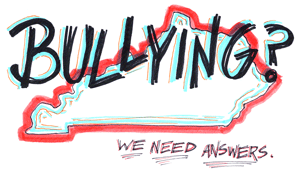The staff editorial is the majority opinion of The Murray State News Editorial Board.

Gov. Matt Bevin may be a sore subject for higher education as of late, but he recently signed a Senate bill for the betterment of Kentucky public schools.
Senate Bill 228 has been in the works since late February. According to the Kentucky Legislature, it was introduced in the Senate on Feb. 24, moved to the House on March 10, passed on March 28 and was signed by Gov. Bevin on April 9.
This bill, co-sponsored by Danny Carroll, Paducah’s Republican senator, establishes an official, state-wide definition of bullying.
Kentucky public schools will now legally recognize that bullying is “any unwanted verbal, physical or social behavior among students that involves a real or perceived power imbalance and is repeated or has the potential to be repeated.”
It is a standard for teachers, parents and students which aims to eliminate confusion in regard to what bullying is, thus improving schools’ systems of tracking and reporting cases of bullying.
Here’s where things actually get confusing, though: we’re attempting to qualify an every-changing, ever-complicated social problem and quantify its consequences.
Other states have passed similar bills with definitions of their own – but how do you paint a face on a monster that will never sit still?
Victims and perpetrators of bullying don’t look a certain way, don’t act a certain way and don’t fit into a certain age demographic. Bullying itself is just as hard to peg down and simplify – its characteristics are as adaptable and responsive to its environment as children are.
Now, before we get in too deep here, let us say this: bullying is a seriously terrible problem and any effort to solve it or prevent it from happening in our schools is not only admirable, but necessary.
However, we need to be prepared to do more than just define said problem because we need to be prepared for the possibility that the definition, quite literally, may not do the problem justice.
What if there is no power imbalance? How can one differentiate between a friend teasing a friend and a friend bullying a friend?
What does “social behavior” entail? Does it include cyberbullying, or does that warrant a definition of its own?
What happens when Sally overhears John joking around with Owen and thinks it’s bullying? John did say Owen smelled funny that day – a likely “unwanted verbal behavior” – but does that mean he should be pegged a bully and Owen should be labeled a victim? How long will those labels follow them?
This definition is a good start to a conversation that clearly involves a lot of unanswered questions, and it’s a conversation that needs to turn into action.
Students, teachers and parents need to be aware of the signs and need to be educated on the many forms bullying takes.
Certain policies and codes, however, may cause children and teenagers to avoid any conflict or differing viewpoint altogether for fear of strict punishment, which may do more harm than good – hindering critical aspects of childhood development.
Such action may also deter children from speaking up.
Will they get someone suspended or expelled over what may be a one-time occurrence? What if everyone finds out they’re a “tattle-tale” and they get bullied more or become an outcast?
Programs need to focus more on education and empowerment.
We can keep trying to put the term “bullying” in a box, taped up and “clearly labeled,” but at a certain point we will have to open that box and face its contents head-on.